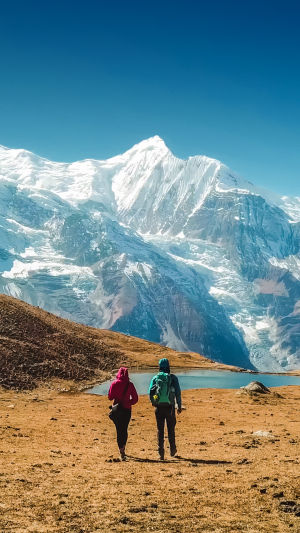Annapurna, located in the Himalayas in north-central Nepal at 83° 49' 14" east longitude and 28° 35' 45" north latitude, stands at 8,091 meters above sea level and is the 10th highest mountain in the world.
French mountaineers Maurice Herzog and Louis Lachenal were the first to reach the summit on June 3, 1950.
The climate on Annapurna is characterized by a dry and windy winter season and a rainy summer season, caused by the strong southeast monsoon. The rainy season typically lasts from early June to mid-September and brings heavy rain, resulting in frequent ice avalanches.
Additionally, during the period from mid-November to mid-February of the following year, temperatures can drop to -60℃, with average temperatures between -40℃ and -50℃ and maximum wind speeds reaching 90 m/s.
The best time for climbing is during the spring season when the weather is more stable and the good weather cycle lasts for about two weeks.
However, due to Annapurna's remote location and only being accessible from September to October each year, it is important to be prepared for altitude sickness. Since the first ascent in 1950, nearly 300 people have reached the summit, but at least 73 have died trying.
This high death rate makes Annapurna the most dangerous of all peaks above 8,000 meters.
The south wall of the mountain is considered to be the most difficult climb in the world. Despite this, many mountaineers still attempt to climb the mountain every year, drawn by its challenging nature.
Even experienced mountaineers who have successfully climbed the mountain once have said they may not be able to do it a second time, further emphasizing its difficulty. Novice climbers may find it more suitable to scale the less dangerous peaks within the Annapurna reserve, visit teahouses on Nepal's Khopra ridge, or head to Mardi Himal Base Camp.
Despite the challenges and dangers associated with climbing Annapurna, the mountain continues to attract mountaineers from all over the world. The allure of climbing one of the highest peaks in the world and the sense of accomplishment that comes with it is a powerful motivator for many.
It is important to note that climbing Annapurna is not just a physical challenge, but also a mental one. The harsh conditions and unpredictable weather can take a toll on even the most experienced climbers. It is essential for climbers to be well-prepared and trained, both physically and mentally, before attempting to summit the mountain.
Climbing Annapurna also has a significant impact on the local communities and environment. The influx of climbers and trekkers puts a strain on the limited resources and fragile ecosystem of the region.
It is important for climbers to be aware of their impact and to take steps to minimize it, such as by using eco-friendly gear and supporting local conservation efforts.
Overall, Annapurna is a challenging and dangerous mountain that requires a significant amount of preparation and training, but for those who are able to submit it, the experience is truly unforgettable.





